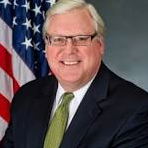
“Give me liberty, or give me death!” “Union, liberty, peace.” “Happy Days Are Here Again.” “The Buck Stops Here.” “I like Ike.” “It’s Morning in America Again.” “Kinder, Gentler Nation.” “It’s the economy, stupid.” “Change We Can Believe In.”
And most recently, “Make America Great Again.”
Now out of Democrat Albany comes this one: “Mandate a sprinkler system in every new home!”
Yes, you read that right, mandate a sprinkler system in every new home. Specifically, the state Fire Prevention and Building Code Council has proposed to change the state’s 2020 Residential Code to mandate automatic sprinkler systems in new construction. If approved, it would require that automatic sprinkler systems be installed in newly constructed one and two-family homes. Additionally, sprinkler systems will be required if an addition is made to a home that creates a third story or if an attic is finished and made habitable. Sprinklers will be required in all areas of the dwelling with some exceptions for small closets, bathrooms, crawl spaces and the like, and would need to have a temperature sensitivity range of 135 degrees to 225 degrees depending on the distance from a potential heat source such as an oven.
There are other details but there’s no need to belabor the point: It’s ridiculous!
If it keeps moving forward to the point of enactment, it will surely be memorable – for all the wrong reasons. The New York State Builders Association (NYSBA) estimates the mandate would increase the cost of building a home by up to $20,000-$30,000 at a time when skyrocketing construction costs already make it difficult to build and drive up already historically high costs for homebuyers.
NYSBA Executive Director Michael Fazio recently wrote in opposition, “While we fully support efforts to enhance safety, this mandate would impose significant financial burdens on home buyers and disproportionately affect rural and low-income communities when New York is in the midst of a severe housing affordability and supply crisis, which shows no signs of ending any time soon.”
What can Democrats be thinking in a state that already ranks as one of the most unaffordable states in America in far too many categories, including high taxes.
What can they be thinking in a state where, for as long as I’ve been in office, Albany’s appetite for imposing unfunded state mandates has been insatiable and where the consequences have become nothing short of a mass exodus from New York, the largest population loss of any state in the nation.
It just keeps defying belief.
In 2011, former Governor Andrew Cuomo made a big show – like he would do on so many other issues – about cracking down on unfunded state mandates out of Albany. As part of his push to deliver a local property tax cap, he also made a promise to localities and school districts to roll back one of the nation’s heaviest burdens of unfunded state mandates. It never happened. That promise was never kept and we still have a lot of work to do to lift the existing burden off the backs of local governments and local property taxpayers. It’s the reason I and many others have so often helped sponsor legislation to put an end to unfunded state mandates. If the state mandates a program or a service that increases costs, the state should pay for it.
Instead, the mandates just keep pouring out of Albany. A barrel full of energy mandates are in the pipeline, which I’ve warned about many times over the past few years, including an all-electric school bus mandate that school districts warn could be the heaviest unfunded mandate hit of all.
Now, instead of commonsense steps to ease this state’s affordability crisis and lift the burden, New Yorkers may be in line for just another soaking.
Senator Tom O'Mara represents New York's 58th District which covers all of Chemung, Schuyler, Seneca, Steuben, Tioga and Yates counties, and a portion of Allegany County.
- Read more...
- 0 comments
- 133 views

